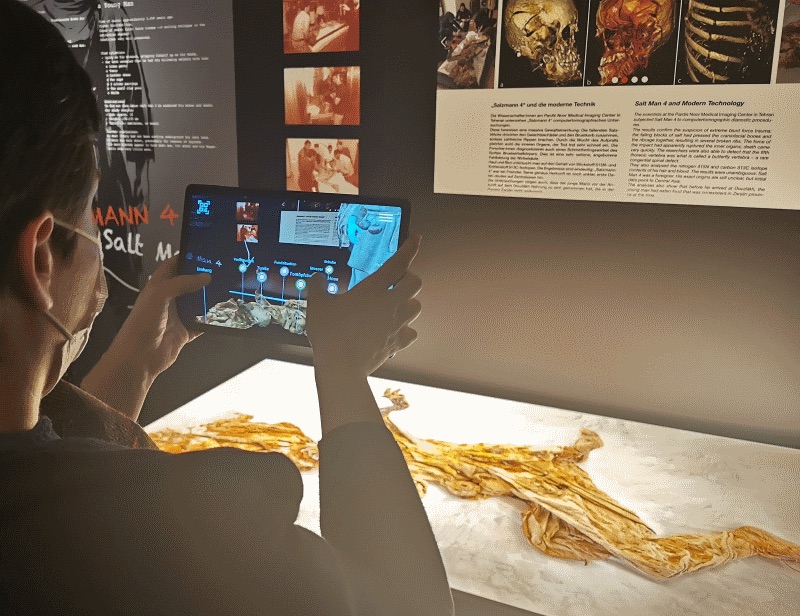The German Mining Museum Bochum brought its special exhibition, Death by Salt. An Archaeological Investigation in Persia, to visitor tablets that were fully managed thanks to Cortado MDM.
From early June to September 2021, the German Mining Museum Bochum hosted its special exhibition, Death by Salt. An Archaeological Investigation in Persia. The exhibition theme was the Salt Men of Zanjān and their living environment. The scientific work surrounding the only surviving salt mummies in the world, as well as numerous finds from excavations at the ancient salt mine of Chehrābād, Iran were on display.
The exhibition team also responded to the unique challenges that the Covid pandemic posed for cultural institutions by initially creating a digitally accessible exhibition. This exhibition was supplemented with numerous virtual contents such as 3D models and videos. The exhibition was opened digitally in April 2021.
The exhibition was also able to open in a physical form in June 2021, after the appropriate covid steps allowed the museum to operate again, but without artifacts that could not be shipped out of Iran due to the pandemic. For this reason, Nicolas Schimerl, research assistant at the German Mining Museum in Bochum, decided to integrate the content already created for the digital version of the special exhibition into the analog show. Fifteen museum-owned Android tablets from Lenovo were used for this. To ensure easy maintenance and management of the tablets, it was clear that they needed to be centrally managed and issued to visitors with the kiosk mode activated. This was made possible by Cortado MDM. It also ensured that updates and apps could be rolled out easily and centrally, rather than setting up each museum tablet individually.
During his research, Nicolas Schimerl came across Cortado MDM. “It was important to us, for data protection reasons alone, that the company was based in Germany, because the highest data protection standards are an important concern for us,” reports the archaeologist.
Ease of use was also a key consideration when selecting the system. “We got along very well with the solution. The usability is a dream,” says Nicolas Schimerl. Although he is not an IT expert, he set up the solution within a few hours.
Museum visitors used specially created apps on the tablets and viewed the digitized exhibition objects located in the analog space. “The nice thing was that we could take the visitors on an archaeological expedition with the tablets,” says Nicolas Schimerl. For upcoming exhibitions with digital content, Nicolas Schimerl said he can imagine using Cortado MDM again. “We were very pleased with the Cortado solution.”
The special exhibition “Death by Salt” is permanently accessible as a digital version on the website https://death-by-salt.com/. The exhibition was created in close cooperation with the Archaeological Museum Frankfurt, the Iranian National Museum Tehran, and the Salzmann and Archaeological Museum Zanjān and funded by the German Research Foundation, the Gerda Henkel Foundation, and the Sparkasse Bochum Foundation for the Promotion of Culture and Science.
About the German Mining Museum Bochum
Founded in 1930, the Deutsches Bergbau-Museum Bochum – as the Leibniz Research Museum for Geo-resources – is tasked with collecting, preserving, investigating, exhibiting, and teaching the material heritage of the mining industry. The research areas comprise archaeometallurgy, mining history, materials science, mining archaeology, alongside the Research Laboratory and the Mining History Document Centre.
Through the four tours of our permanent exhibition – Hard Coal, Mining, Mineral Resources, and Art – and with the visitor’s mine, the fascination of mining in its various guises is conveyed to visitors. On the 1.2 km long underground route network, visitors get an impression of everyday life underground and the technical and historical developments in mining.
